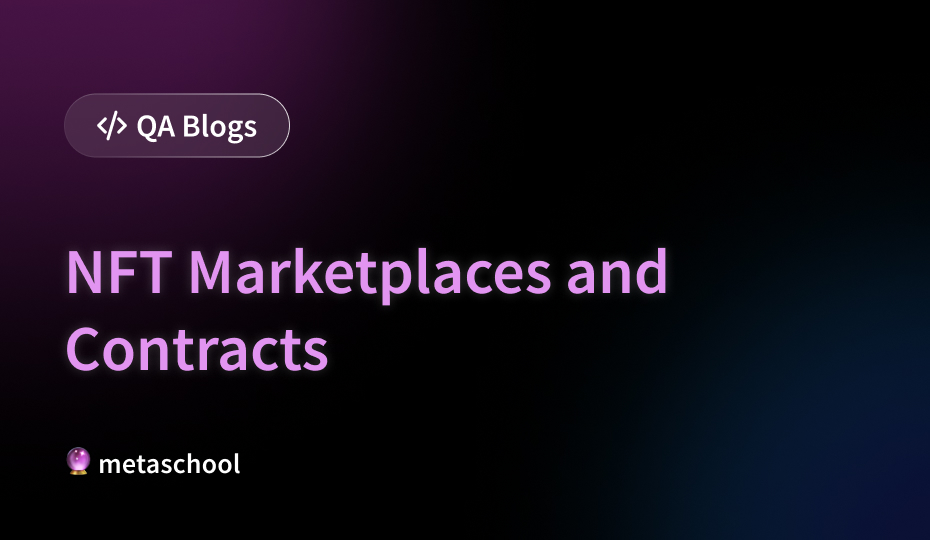Table of Contents
Non-Fungible Tokens (NFTs) have taken the digital world by storm, transforming the concept of ownership and enabling creators to tokenize and monetize digital assets in unprecedented ways. Central to the NFT ecosystem are NFT marketplaces and the smart contracts that underpin them. In this article, we’ll delve into the world of NFT marketplaces and contracts, exploring their functionalities, architecture, and impact on the digital landscape.
Understanding NFTs and Their Significance
NFTs are unique digital tokens that represent ownership or proof of authenticity of a specific asset, such as digital art, collectibles, virtual real estate, or in-game items. Unlike fungible tokens like Bitcoin or Ethereum, which are interchangeable and mutually interchangeable, each NFT has distinct properties, metadata, and ownership rights, making it irreplaceable and indivisible. This uniqueness and scarcity have fueled the rise of NFTs as a new form of digital ownership and expression, empowering creators and collectors alike.
The Role of NFT Marketplaces
NFT marketplaces serve as online platforms where creators can mint, buy, sell, and trade NFTs, while collectors can discover, purchase, and showcase their digital collections. These marketplaces provide a user-friendly interface for browsing NFTs, managing wallets, and conducting transactions securely on the blockchain. Some of the most popular NFT marketplaces include OpenSea, Rarible, SuperRare, and Foundation, each catering to different niches and communities within the broader NFT ecosystem.
Architecture of NFT Marketplaces
NFT marketplaces typically consist of several key components:
- Smart Contracts: Smart contracts are the backbone of NFT marketplaces, governing the creation, ownership, transfer, and trading of NFTs on the blockchain. These contracts define the rules and functionalities of the marketplace, including minting, listing, bidding, and escrow services.
- User Interfaces (UIs): User interfaces provide a front-end interface for interacting with the marketplace, enabling users to browse, search, and discover NFTs, as well as manage their collections and conduct transactions. UIs may be web-based, mobile apps, or integrated into existing platforms.
- Wallet Integration: Wallet integration allows users to connect their cryptocurrency wallets, such as MetaMask or Trust Wallet, to the marketplace, enabling seamless authentication, token transfers, and payment processing.
- Metadata Storage: Metadata storage solutions store and retrieve metadata associated with NFTs, including attributes, descriptions, images, and other multimedia content. IPFS (InterPlanetary File System) and decentralized storage networks are commonly used for storing NFT metadata in a distributed and censorship-resistant manner.
NFT Contracts and Standards
NFT contracts are smart contracts written in languages like Solidity that conform to specific NFT standards, such as ERC-721 or ERC-1155. These standards define the interface and functionalities of NFT contracts, including methods for minting, transferring, and querying NFTs, as well as events for tracking ownership changes and metadata updates. ERC-721, pioneered by projects like CryptoKitties, is the most widely adopted standard for NFTs, while ERC-1155, introduced by Enjin, enables the creation of both fungible and non-fungible tokens within the same contract.
Use Cases and Applications
NFT marketplaces and contracts have a wide range of applications across various industries and use cases:
- Digital Art and Collectibles: NFT marketplaces enable artists and creators to tokenize and monetize digital art, collectibles, and memorabilia, providing a new revenue stream and ownership model for creators.
- Gaming and Virtual Worlds: NFTs are revolutionizing the gaming industry by enabling true ownership of in-game assets, virtual real estate, and digital goods, fostering player-driven economies and interoperability between different gaming platforms.
- Music and Media: NFTs are being used to tokenize music rights, royalties, and digital media, empowering musicians, content creators, and media companies to engage with fans and monetize their content in novel ways.
- Real Estate and Virtual Land: NFTs represent a new frontier in real estate by tokenizing physical properties, virtual land, and digital assets, enabling fractional ownership, liquidity, and peer-to-peer trading of real-world assets.
- Brand Licensing and Intellectual Property: NFTs can be used to tokenize brand assets, intellectual property, and licensing rights, allowing brands and content creators to protect and monetize their creations while engaging with their audiences directly.
Challenges and Considerations
While NFT marketplaces and contracts offer exciting opportunities for innovation and digital ownership, they also face several challenges and considerations:
- Scalability: Scalability remains a challenge for NFT marketplaces and contracts, particularly during periods of high demand and congestion on the blockchain. Layer 2 scaling solutions, sidechains, and interoperability protocols are being explored to address scalability limitations.
- Security: Security vulnerabilities in smart contracts, such as reentrancy attacks or token approval exploits, pose risks to NFT marketplaces and users. Secure coding practices, formal verification, and regular audits are essential to mitigate security risks.
- Regulatory Compliance: NFT marketplaces and contracts must navigate regulatory uncertainty and compliance requirements, particularly regarding securities laws, copyright infringement, and consumer protection. Regulatory clarity and compliance solutions are crucial for the long-term viability and adoption of NFTs.
- Environmental Impact: The environmental impact of blockchain networks, particularly proof-of-work (PoW) blockchains like Ethereum, raises concerns about energy consumption and carbon emissions associated with NFT minting and transactions. Sustainable blockchain solutions and eco-friendly alternatives are being explored to address environmental concerns.
Conclusion
NFT marketplaces and contracts are revolutionizing the concept of digital ownership, enabling creators and collectors to tokenize and trade digital assets in unprecedented ways. From digital art and collectibles to gaming assets, virtual real estate, and beyond, NFTs represent a new paradigm for ownership, creativity, and value exchange in the digital age. As the NFT ecosystem continues to evolve and mature, it holds the potential to democratize access to cultural assets, empower creators, and redefine the future of ownership and expression in the digital landscape.
